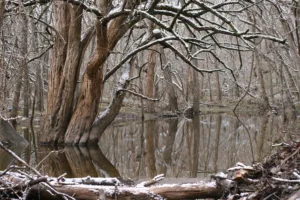
There are two new online holiday shopping options in our 2023 collection of Native Plant Society of Texas-inspired gift possibilities. These gifts let you to share the love of native plants and awareness of our organization while giving proceeds back to support our mission!
- Improved NPSOT Gift Membership: It’s easier than ever to instantly give someone the gift of Society Membership, perfect for your last-minute needs! To purchase a NPSOT Membership as a gift, place your order online and your recipient will receive an immediate notification email upon submission, followed by the standard new membership packet by mail.
Benefits include our member’s magazine, local newsletters where available, discounts on events including classes and symposiums, nursery and business discounts where available, and chapter memberships as the recipient joins statewide community with over 4000 members who are united in our mission to promote Texas native plants. If your recipient already has a membership, this will extend their membership! If you have any gift membership questions, just reach out to our Membership Coordinator at membership@npsot.org
- Gift Cards for the NPSOT Bonfire Store: You can now purchase a Bonfire Gift Card recommending our apparel in the Native Plant Society of Texas Bonfire store. Order online, selecting your desired email gift card delivery date, and recommending the Native Plant society of Texas store. Your recipient will receive an email gift card they can use toward our popular selection of baseball caps embroidered with the NPSOT logo, or a wide variety of our Pineywoods Ecoregion Symposium apparel, from long and short sleeve t-shirts in multiple colors to cozy hoodies and sweatshirts!
We are also continuing these shopping options that support NPSOT:
- Books about Native Texas Plants in our online store with proceeds benefiting NPSOT through an Amazon Associates partnership. Delivery times will vary for each item so be sure to check your shopping cart for estimates.
Shop the NPSOT Bookstore here.
- Native Plant Photo Gifts and Prints through SmugMug, including paper prints, fine-art prints, wall art, desk art, keepsakes, such as mugs and buttons, albums, and greeting cards. Former photo contest participants graciously contributed to this service; the image above was contributed by Roger Sanderson. Order deadlines run through December 17 depending on the item and shipping option you select.
- NPSOT apparel and merchandise offered through our CafePress store. Delivery times will vary for each item so be sure to check your shopping cart for estimates.


